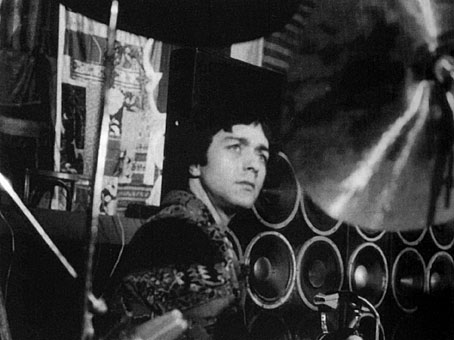
Jaki Liebezeit.
One thing to note about the late Jaki Liebezeit is that everyone liked Can in the 1970s, which means that everyone liked Jaki Liebezeit’s drumming. When the music wars were raging in 1976, Can were one of the few groups from the hippy side of the barricade given a pass by the punks. Prog-heads liked Can because of the rock grooves and complex improvisations; punks enjoyed the muscular insistence of songs like Father Cannot Yell and Halleluwah. David Bowie liked Can; Brian Eno liked Can enough to let Jaki Liebezeit guest on Before And After Science (Eno also made this tribute video for the Can DVD); John Lydon when he was still Johnny Rotten played Halleluwah on his Capital Radio show in 1977 together with other favourite records; a year later, Pete Shelley wrote a sleeve note for a Can compilation (and the first Can album I bought), Cannibalism; Mark E. Smith liked Can (of course); Siouxsie called Jaki Liebezeit “the best drummer in the world,” while Jah Wobble would go on to work with Liebezeit on numerous recordings under his own name and as a guest on other albums. Some of the Wobble recordings appear below. If there’s a minimum of Can music in the following list that’s mainly because Mute/Spoon keep the back catalogue away from British users of YouTube. I don’t mind that; the absence of the prime stuff means I can draw attention to some examples of Jaki Liebezeit’s post-Can work which might otherwise be overlooked.
Mother Sky/Deadlock (1970) by Can.
Two numbers from the fantastic live set the group played on German TV for an audience of ecstatic/bored/stoned hippies.
Jaki Liebezeit drum solo (1970).
In the Can Book Liebezeit says he never played drum solos but he was forgetting about this example from the group’s early days.
Flammende Herzen (1977) by Michael Rother.
Michael Rother’s first solo album was also his best after leaving Neu! The album is essentially a duet between Rother and Liebezeit, with Rother playing all instruments apart from the drums.
Oh Lord Give Us More Money (1979) by Holger Czukay.
In which Holger Czukay takes the Can song Hunters And Collectors, removes the vocals then extends and remixes the whole thing into a 13-minute collage blending the music with BBC sound effects and vocal samples taken from radio and TV. Samplers didn’t exist in 1979, this was all done with tape, and it’s incredible. I forget whether it was Jaki Liebezeit or Michael Karoli who said they didn’t recognise their playing afterwards (probably the latter) but Leibezeit’s drums sustain the entire piece. He also plays on the rest of the album. Movies is Czukay’s masterpiece, and more true to the questing, inventive spirit of Can than the albums the group made after Landed. Another track, Persian Love, samples Middle Eastern vocalists two years before My Life In The Bush Of Ghosts. Eno was paying attention.
Signal (1981) by Phew.
Movies was produced at Conny Plank’s studio, as was this debut album by Japanese singer Phew which features music by Phew, Plank, Holger Czukay and Jaki Liebezeit. An abrasive post-punk number.
Never Gonna Cry Again (1981) by Eurythmics.
The best song on the group’s first album. Another Conny Plank production with Jaki Liebezeit on drums and Holger Czukay on French horn.
Full Circle R.P.S. (No. 7) (1982) by Holger Czukay, Jah Wobble, Jaki Liebezeit.
Jah Wobble started collaborating with Holger Czukay in the early 80s, and the Full Circle EP was one result. This is one of two pieces designated “R.P.S.” (Radio Picture Series) in which Czukay’s beloved shortwave transmissions are mixed into the music.
It Was A Camel (1983) by Jah Wobble, Holger Czukay.
Another Wobble/Czukay EP, and one that for some reason has never been reissued. U2’s The Edge provides guitar on the opening and closing tracks but not on this piece.
Spinner (1995) by Eno/Wobble.
Wobble’s remix/reworking of Eno’s Glitterbug soundtracks for Derek Jarman features Jaki Liebezeit on the title track.
The Immanent (1999) by Jah Wobble.
Liebezeit appears on so many of Jah Wobble’s solo albums it’s difficult to choose a representative piece. Before Can became Can they were Inner Space so it seems fitting to end with something from Deep Space.
Previously on { feuilleton }
• Can esoterics
• Can soundtracks
• Can’s Lost Tapes

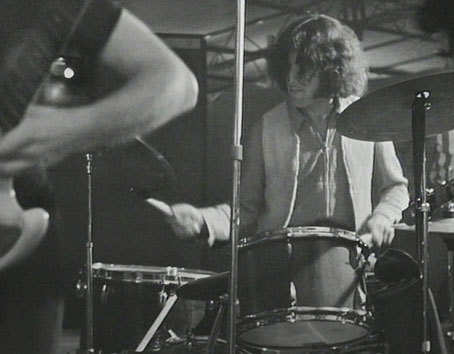
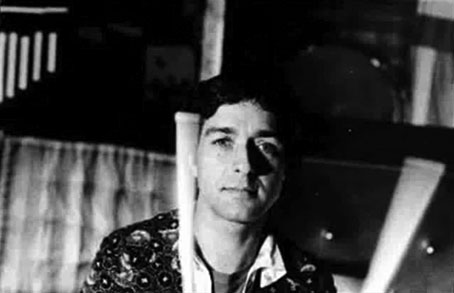
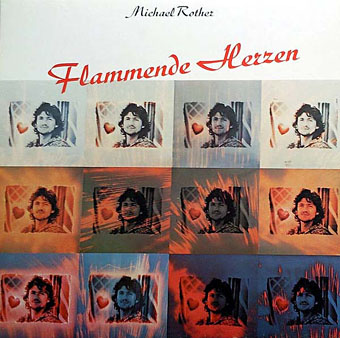
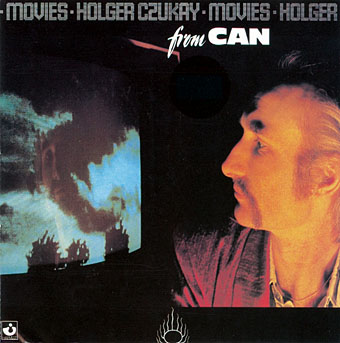
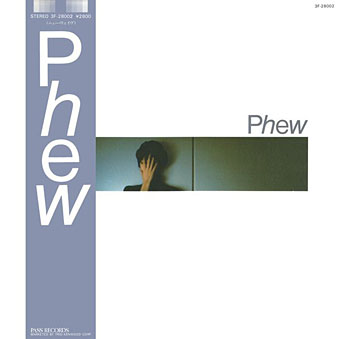

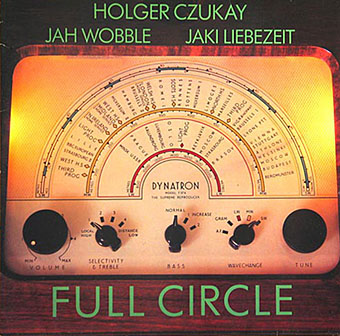
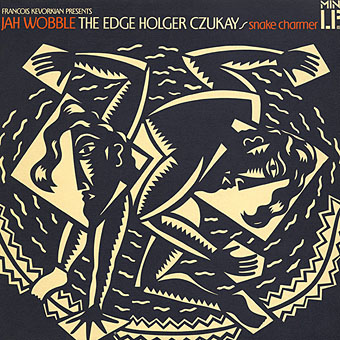
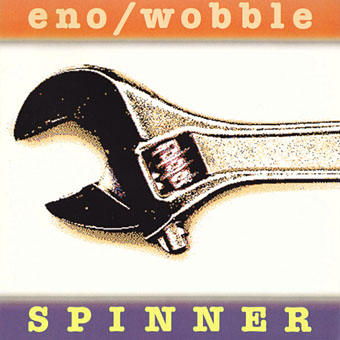
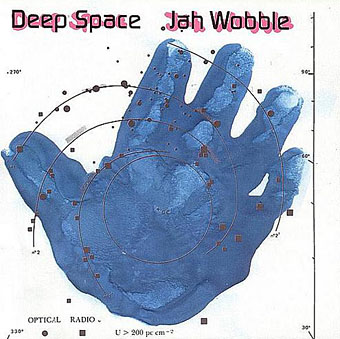
Persian Love DOES NOT samples “Arabian” vocalists, but persian
Thanks, I’m well aware of the difference–Sussan Deyhim is one of my favourite singers–but I’ve never seen any mention of the identity of the vocalists Czukay uses on that track. He was recording things from shortwave radio so unless he knew the station (or can speak Farsi), he may not know himself. I’ve amended the post slightly.
Never was so great a drummer so aptly named – R.I.P.
Thank you..lovely article!
Jaki Liebezeit Dot Dash: http://www.youtube.com/playlist?list=PLqRFBxI54lnpt6BXEZ_PFfuPxE03xMlju
John – Thanks for recording the great man’s passing. As a Can fan, this one hurt a lot. I saw him playing with Joachim Irmler of Faust in 2015 in the incongruous surroundings of the arts centre in Kirkcaldy, a place about as far removed from the great German experimental music of the 70s as can be imagined. Both musicians were firing on all cylinders, creating beautiful music. Jaki seemed like a guy in his 50s not mid-70s; he certainly played like someone who was absolutely determined to keep thinking and moving forward. I suppose that’s why I was so shocked by the news of his death through pneumonia – he still seemed so young. I’ll savour going through the links.
A Liebezeit / Czukay story – In the early 80s, Holger was out promoting his then new album “Der Osten ist Rot” – and actually made it onto Radio 1’s Saturday afternoon new music show to my immense glee. Holger wanted Jaki to play on his version of the Chinese National Anthem but wouldn’t allow Jaki to hear the track before playing over it. Jaki would just have to imagine how it sounded. So Jaki sat down, repeating the title over and over until he decided he’d cracked the rhythmic code of the piece. According to Czukay the rhythm and backing track matched perfectly when put together…
“Michael Rother’s first solo album was also his best after leaving Neu!” I wouldn’t dream of disputing ‘Flammende Herzen”s worth, though your decree does throw shade over Rother’s ‘Katzenmuzik,’ on which Leibzeit drums as well. This theme & variations album hit a perfect balance between Rother’s guitars & electronics — the latter existing mostly as filagree — and Jaki L.’s drums. Subsequent Rother lp’s (e.g. ‘Lust’) saw the guitars recede, supplanted by synths, with drum machine parts eliminating human factor in the percussion tracks. Jaki may have spoken of wanting to drum like a machine, but when the machines took over, Rother’s music was the poorer for it.
Hi Richard. Katzenmusik is certainly familiar here–I still have a vinyl copy– but I find it lacking in variation and harmonic invention compared to the two albums he did before it. I do enjoy the interplay between Rother and Leibezeit on all those albums, however. Not as wild as La Dusseldorf but they suggest the possibility of Can-Neu! or Neu!-Can. I quite like what I’ve heard of Rother’s recent work (which isn’t a great deal). Glad he’s still with us.
Graeme: Can’s fusion at its best was miraculous so nothing would surprise me. I also thought he was always younger than he was, often forgetting it was Michael Karoli who was the youngest member of the group.
Never connected with Eurythmics back in the day, but was aware Jaki and Holger had helped out. All makes sense hearing it now, Jaki’s skittering drums reminiscent of his best Can parts and Holger’s slightly off kilter guitar ringing out. Love it!
Saw Jaki with the Solaris group (Jah Wobble, Bill Laswell, Harold Budd et al) and he just blew me away. He would create a very (apparently) mundane rhythm and not stop. Then when you least expected it he’d add another beat and lift the music higher.
So many drummers should learn from Jaki.
We were blessed to have him amongst us